Particle analysis & identification
The Problem
Particulate matter is highly regulated in injectable drugs, including monoclonal antibodies and recombinant protein drug products. Problematic particles in these drugs include protein aggregates, excipients and formulation components, or process-related contaminants like plastics, cellulose fibers, or metals.
Most particle identification tools are limited to the types of materials they can identify. FTIR can identify protein aggregates and plastics but can’t handle metals or aqueous suspensions – which includes almost all protein-based drugs. SEM-EDS is good at identifying metals but not much else. Morphology-based particle identification techniques like flow imaging or microscopy can provide a guess at particle composition based on appearance but can’t confirm chemical or elemental make-up. This means you need at least two, if not more of these instruments to handle any possible problem particle.
The right tool for the job
Hound is the only particle analysis tool that combines microscopy, Raman spectroscopy, and Laser-Induced Breakdown Spectroscopy (LIBS) to count, size, and ID particles by their chemical or elemental fingerprints. Raman spectroscopy is primo for identifying organic, inorganic, and proteinaceous compounds including plastics and cellulose fibers. If you’re dealing with metals and other inorganic compounds, quickly switch over to LIBS. With all these capabilities packed into one particle identification instrument, Hound is the one-stop shop for identifying your particles in minutes.
The proof
Catch protein aggregation
Identifying protein aggregates is crucial when working with monoclonal antibody and recombinant protein drug products. Raman 532 nm is perfect for identifying proteins when aggregates show up – even allowing you to differentiate between different proteins based on their Raman spectra.
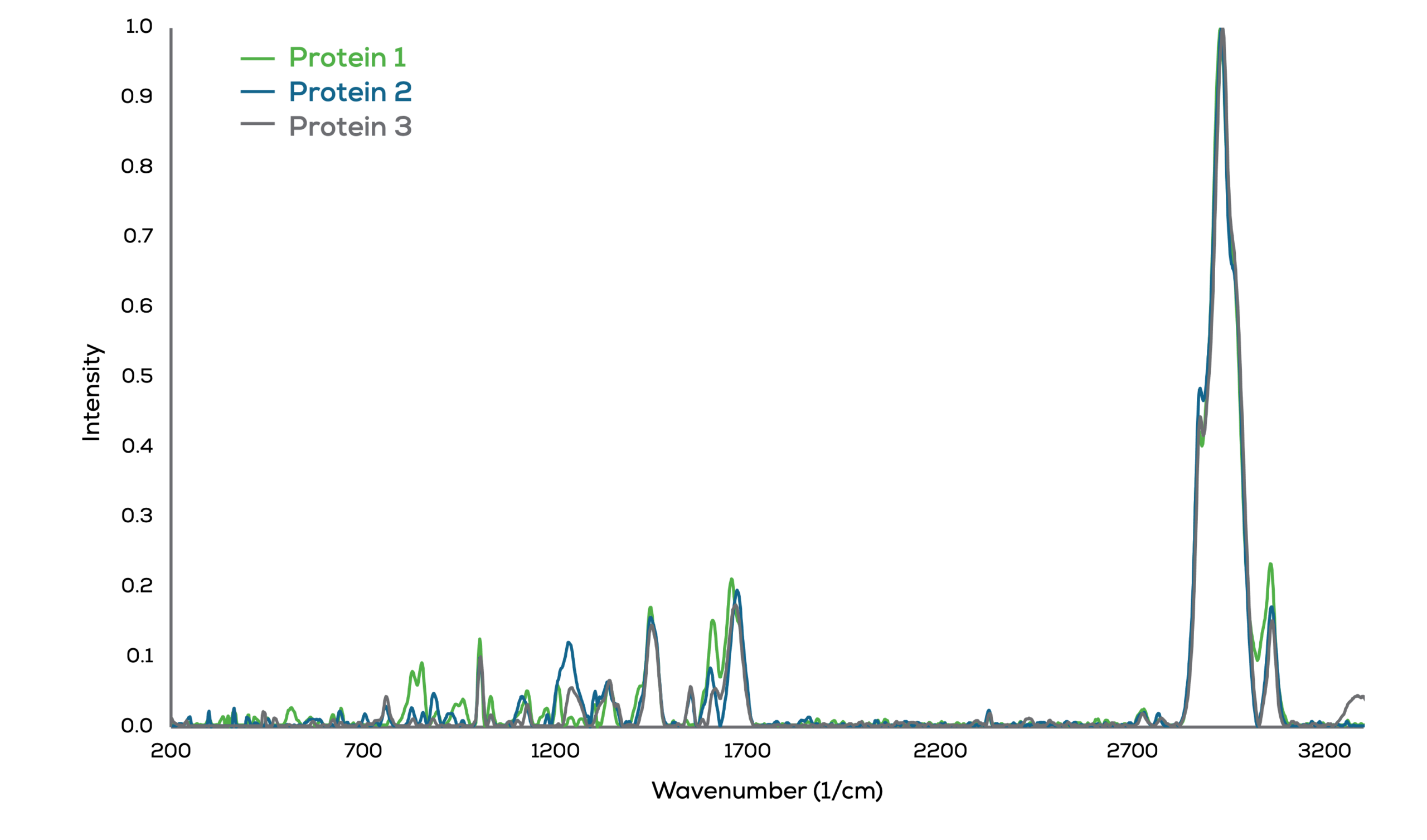
Track down any contaminant
Particle analysis is a breeze with Hound’s combo of Raman lasers and LIBS – even if you have multiple unknowns in your sample. Raman 785 nm identified one of three unknown particles as cellulose. Raman 532 nm was used to identify a second particle as polystyrene. A third particle was identified as copper after LIBS analysis. Within minutes all three visible particles were identified, so a quick pivot could be made to finding their source. If your sample has a ton of particles, Hound can automatically find, count, and identify them all without you having to babysit the instrument.
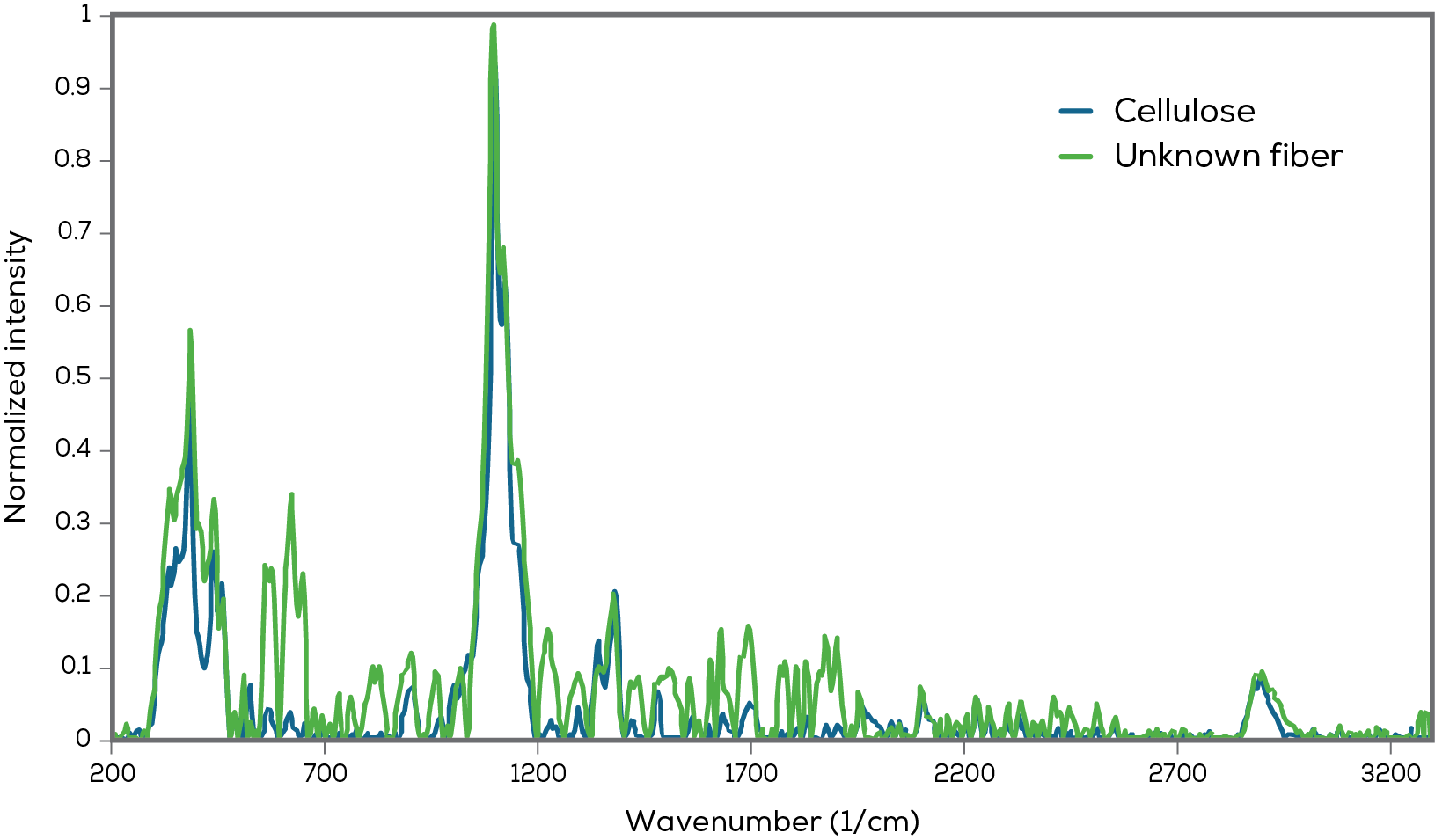
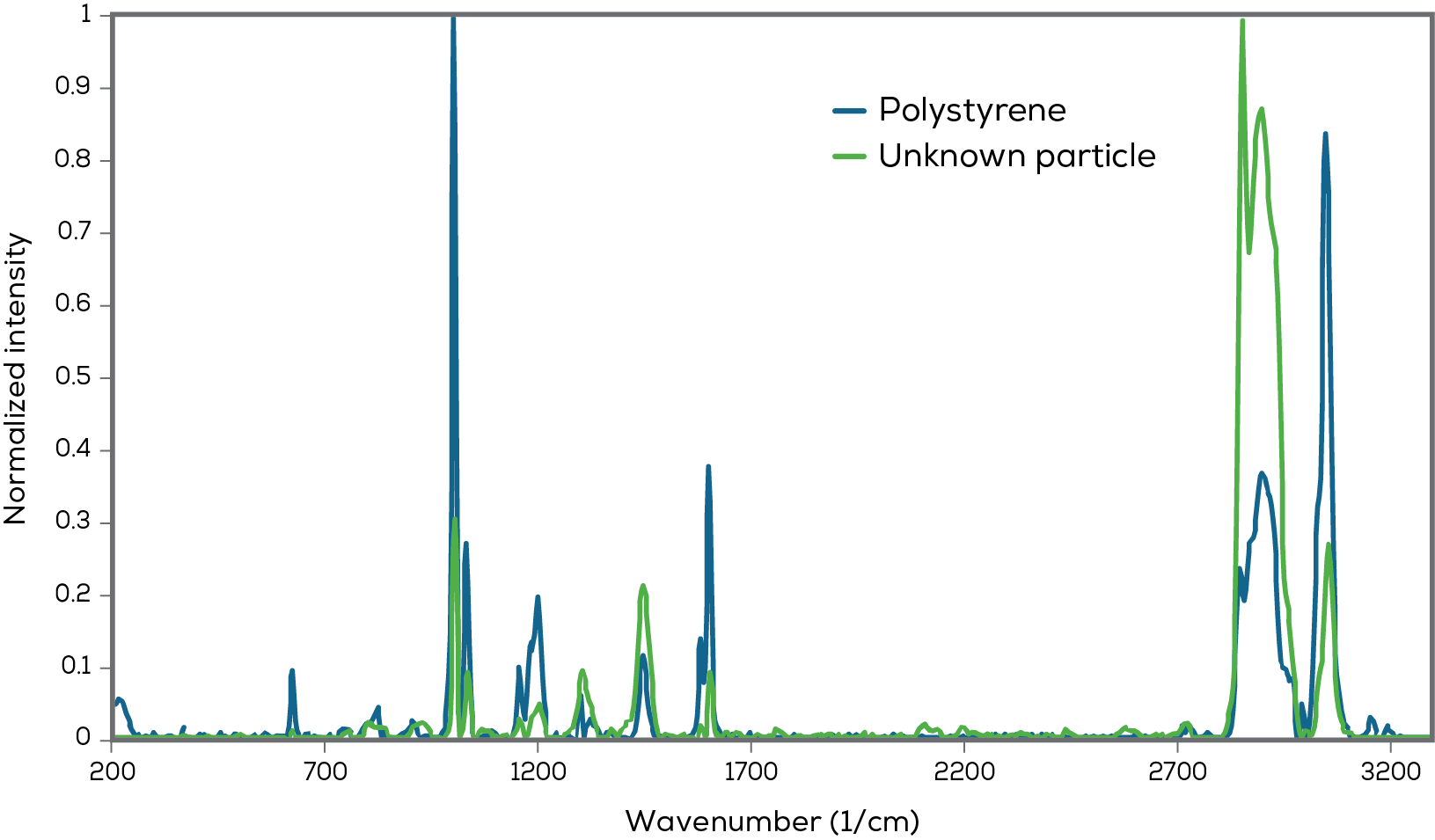
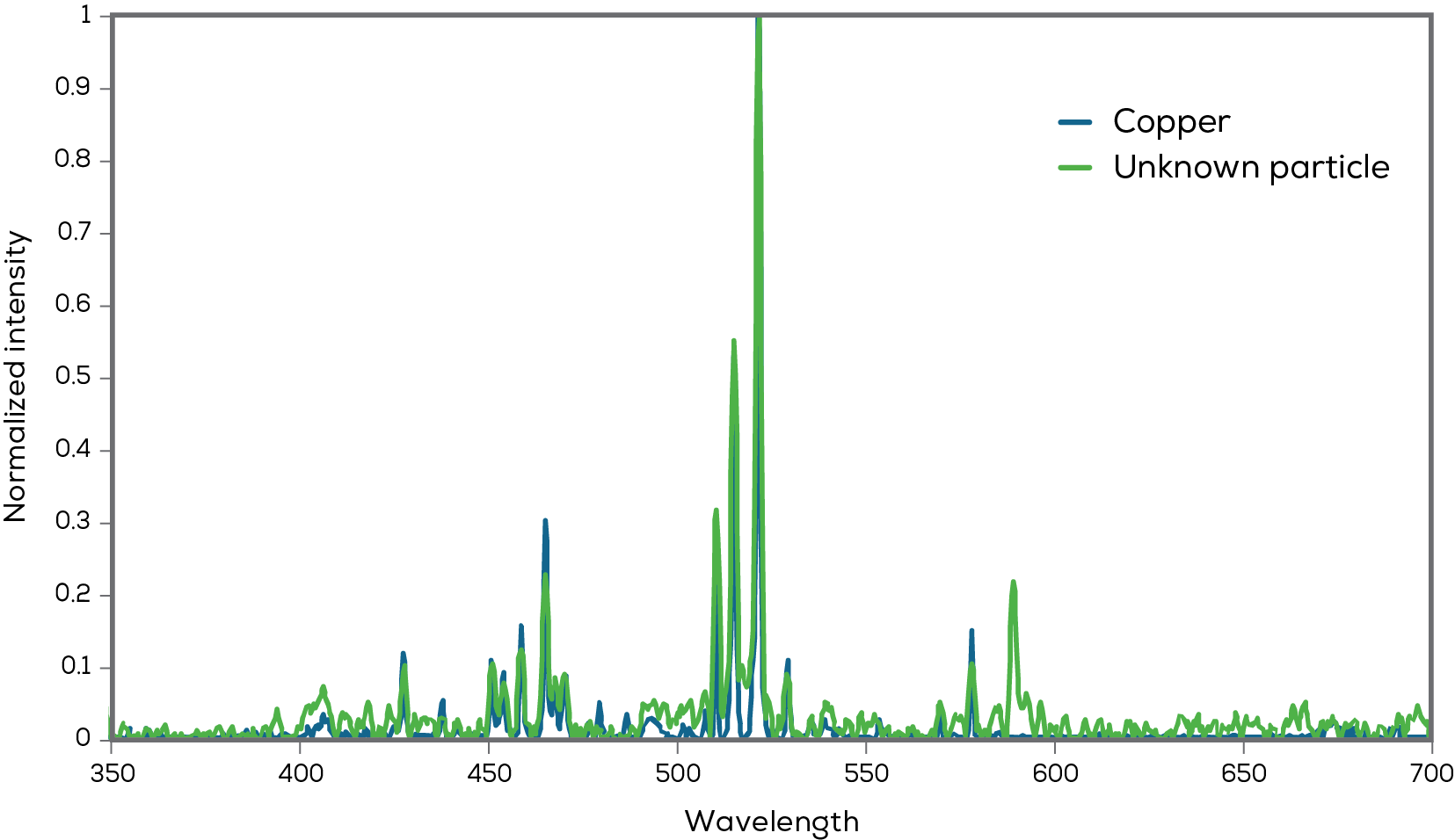
Customize to your process
Hound not only comes with a large, built-in reference database but it also allows you to create custom references to fit your unique process. Aluminum can come from many sources, but this particle was tracked back to the Wheaton crimp caps used to seal this drug product based on the unique peaks identified when compared to an aluminum standard. The ability to create a custom database that allows for the specificity of the spectra makes it that much easier to trace contaminants back to the source.
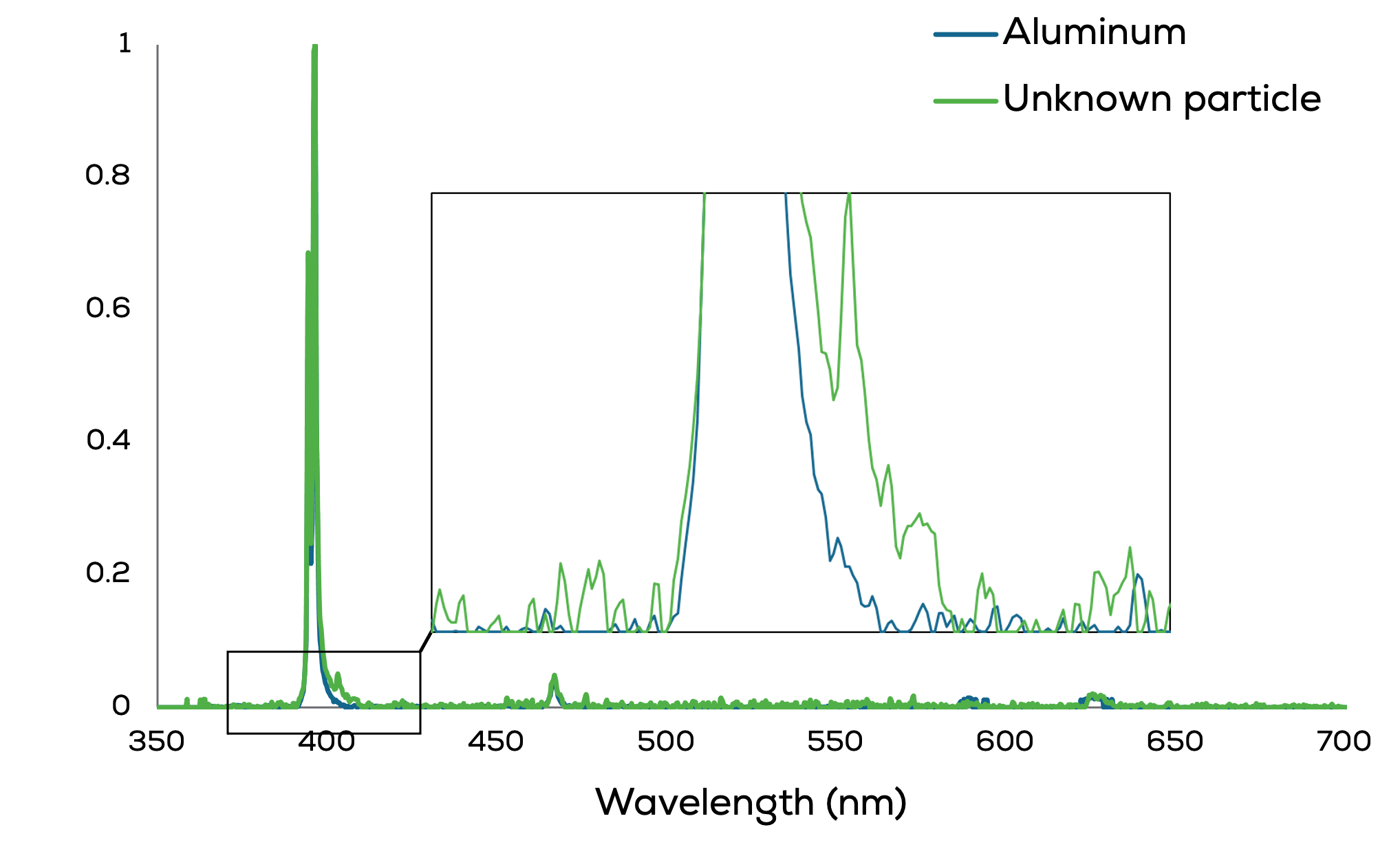
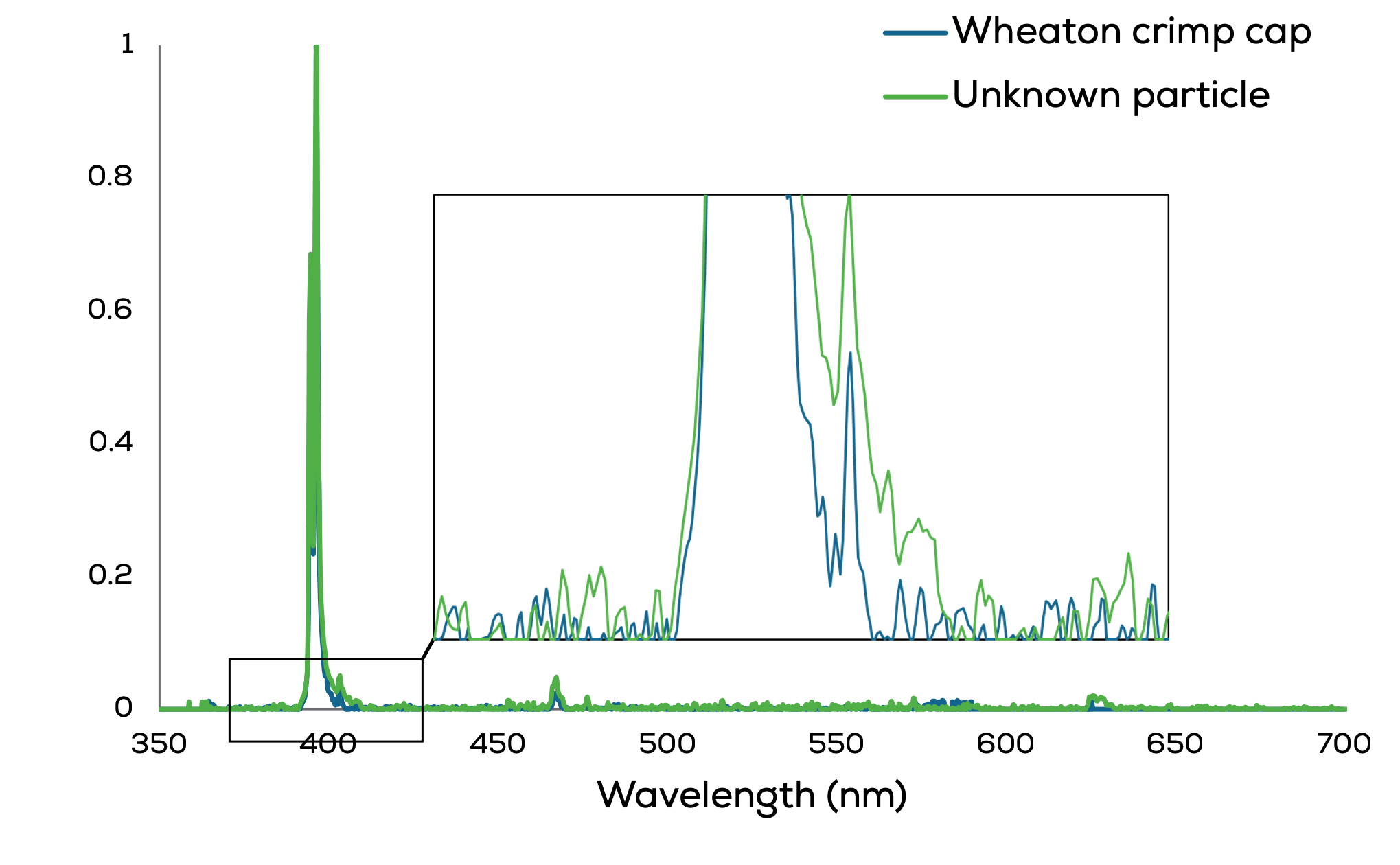
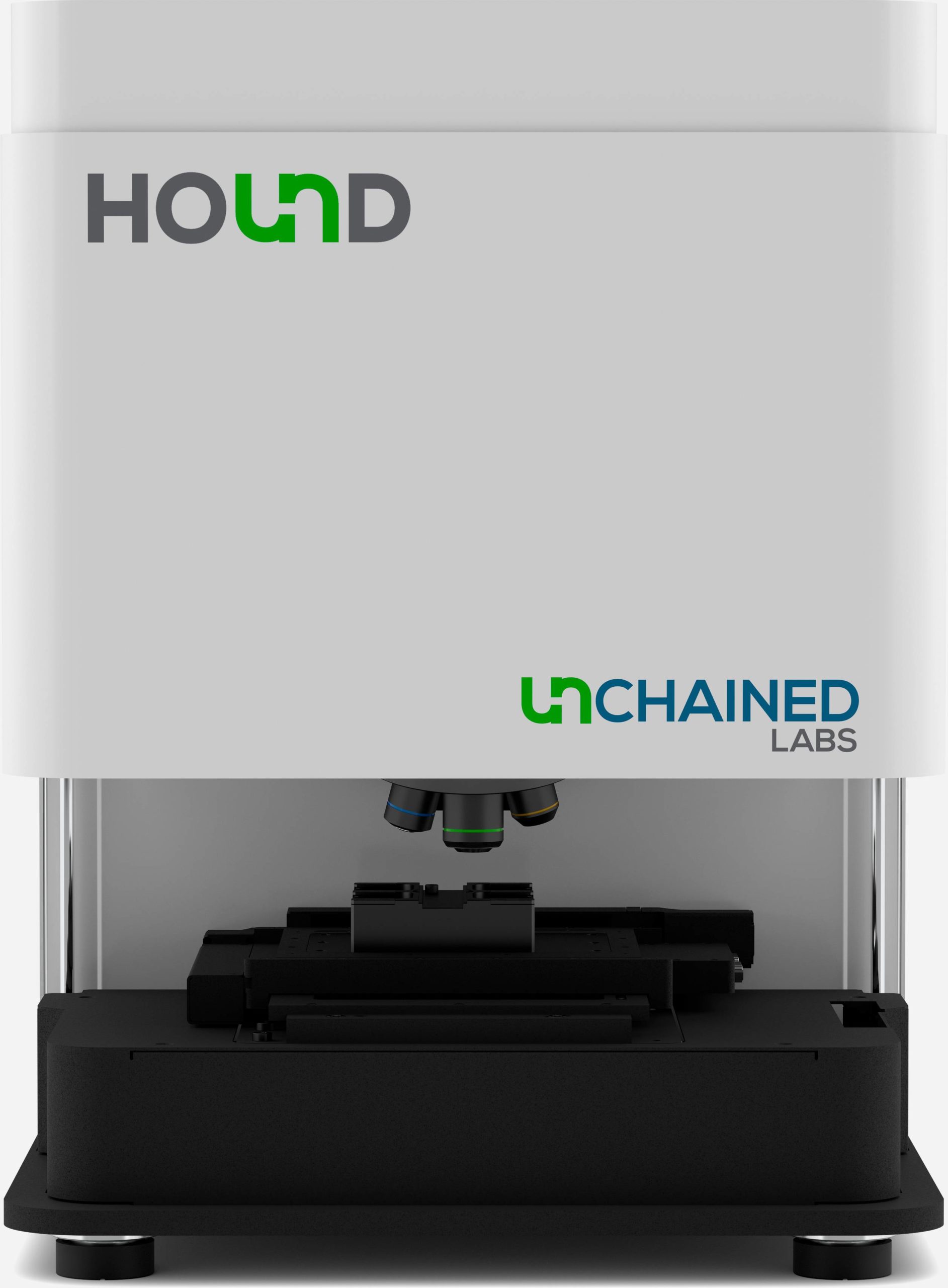
Hound
Hound is the only particle analysis tool out there that combines microscopy, Raman and Laser-Induced Breakdown Spectroscopy (LIBS) to count, size, and ID particles by their chemical or elemental fingerprints. With all these capabilities packed into one instrument, Hound gathers up all the info you need about your particles in minutes.
Want more info?
Want to learn more about how Hound provides specific and customizable particle identification for organic, inorganic, proteinaceous, and metallic materials?


